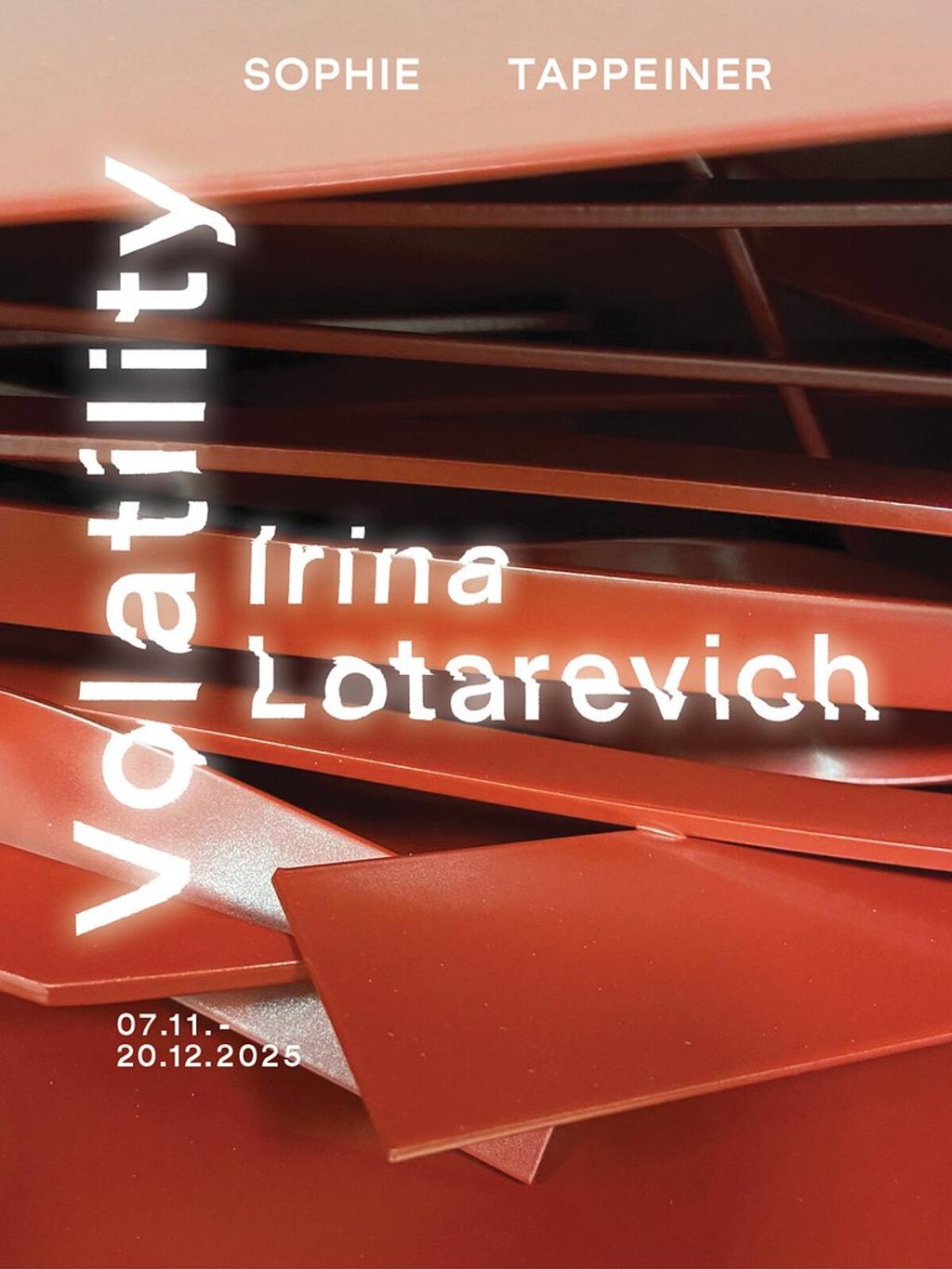Irina Lotarevich: Volatility
Zeitgenössische Kunst Ausstellung
Verbindung zu esel.at

Joint opening with Galerie Krinzinger and Layr.
The simplified visual language of financial markets helps to imaginatively organise reality, making it feel predictable. Like turning to a fortune teller, analysts search for clues about the future within recurring patterns that transform a patchwork of fragmented decisions and global events into a coherent structure. At Volatility, Irina Lotarevich’s works, borrowing the aesthetics of market analysis, hold tension between order and chance.
The central works in the show, Optimism (2025), and Volatility (2025), take the form of a stock market heat map. A grid-like structure reflects the scale of stock capitalisation of a company. Such maps use simplified visual codes—colour and size—to show how share prices change over a given period. In her first use of colour, the artist employs red and green—two extreme emotional states: red for loss and panic; green for gain and optimism. Here, this binary logic collapses into an image of collective uncertainty—a visual field where financial and emotional systems intersect, feed and reflect one another.
Volatility (2025) comprises six identical rectangular steel panels, each containing a series of nested steel trays that gradually fragment and shrink toward the right corner of the composition. Within the grid, curving lines borrow their visual language from line charts. Here, they break into multiple fragments and lose their direction, taking on an almost organic form. From the bottom of the composition, steel lines - taking the form of “candlesticks,” another element used to measure price movement - sprout from the frame, forming a rhythmic pattern of rises and falls. The heat map appears stripped of its usual signifiers - sector divisions such as “Technology” or “Healthcare,” and company names—leaving colour as the sole marker of sentiment: the darker the red, the greater the losses. By covering the surface with chemical patina, Lotarevich introduces chance into the rigid metal structure, producing random variations in shade that reveal the system’s underlying entropy. Looking more closely, the steel lines within the trays bear visible traces of their making. Heated and bent by hand, they retain irregularities and ridges that contrast the uniformity of the frames, the largest of which adopts the 80×60 format, a standard size for shipping boxes. By referencing industrial formats, Lotarevich alludes to mass production and standardisation within a depersonalised order, counterpointing this with the scratches and tangible traces of her own labour. By abstracting the map and giving the surface a pulsating, painterly quality—stripping the financial elements of their evaluative function —she emphasises randomness and chance.
Further in the show, metal lines transform into the visual form of indicators used to evaluate and predict price movements. In the work Indicators II (2025), they are rendered as two intertwined, shiny brass ribbons; abstracted and aestheticised, they twist and intertwine, carefully arranged within a matte steel container. Nearby, identical figures take the form of the children’s toy known as origami “fortune tellers.” Unlike the paper version, where players reveal future signs, colours or numbers, hidden beneath folded paper, the figures remain sealed. The unified presence of the origami fortune tellers suggest collective future scenarios. In Futures (closed, intermediate, intermediate, closed, open, open) and Futures (open, closed, intermediate, open, intermediate, closed) (both 2025), they stand in a row, evenly spaced, their edges sharpening as they freeze in a sequence of movement, revealing both the calm hostility of order and the vulnerability of not knowing.
The uncanny origami form recurs in Volatility, connecting the works of the show through this visual motif. By combining the intimacy of a child’s game with the aesthetics of data systems that promise foresight, Lotarevich highlights the intersection of the personal and the algorithmic. Here, the intimate and the analytical, the magical and the mathematical, become equivalent in their fictionality—built on belief and the lure of control.